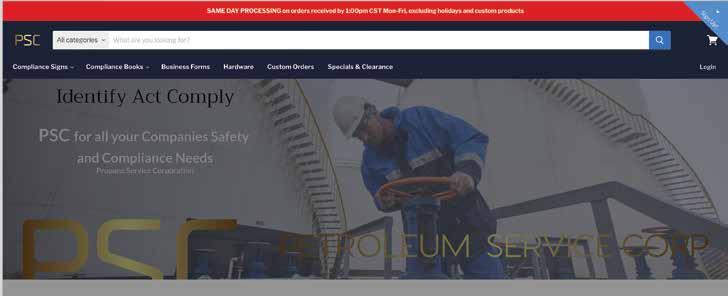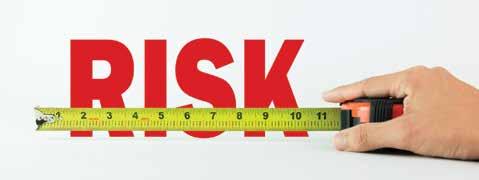
8 minute read
Accident Procedures for Commercial Vehicles
leave the scene of the accident except in extreme emergency situations; if necessary, the driver should write down the accident location and assistance needed, and request that a bystander make the call). • Maintain a professional demeanor, regardless of who was at fault. • Provide his/her name, the company’s name, insurance policy information, and driver’s license to the other party(ies).
The driver should not discuss details of the accident with anyone except his/ her employer, police, or the company’s insurance representative. • Complete a preliminary accident report. • Report the accident to the motor carrier.
Advertisement
The management of any motor vehicle fleet, irrespective of size or type, hopes that drivers are trained well enough to avoid becoming involved in an accident. However, as there is no way to guarantee that an accident will not occur, proper procedures to follow in the event of an accident should be established and drivers thoroughly trained as to their responsibilities.
A driver may be under extreme stress at the accident scene and, since his/her initial actions are often critical to minimizing the effects of the accident, the procedures to follow should be clear and concise. To facilitate this, an information packet containing instructions and forms for use in the event of an accident should be carried in the vehicle.
This report provides recommendations for general procedures for drivers to follow after an accident, including conduct at the scene of the accident and completing a preliminary accident report.

Driver Conduct at the Scene of an Accident
The basic steps that the driver should perform at the accident scene are as follows: • Stop immediately and secure the vehicle (shut off the engine and set the brakes). • Protect the area by properly placing hazard warning devices. (see sidebar for more information) • Assist any injured person (the driver should never move an injured person unless they are in imminent danger). • Notify the police (the driver should not What to Include in a Preliminary Accident Report?
An accident report form for gathering
Warning Devices
Hazard warning devices are required whenever a commercial motor vehicle is stopped upon the traveled portion of a highway or the shoulder of a highway for any cause other than necessary traffic stops.
The Federal Motor Carrier Safety Administration (FMCSA) Regulations (FMCSR) require hazard warning devices to be properly placed as soon as possible, but no later than 10 minutes after stopping
Please refer to the following FMCSA Regulations 49 CFR §393.95(f) which describes the devices you need. 49 CFR §392.22 of the FMCSA outlines where to place the hazard warning devices.
Use Your Flashers! Don’t forget to use your hazard warning flashers immediately when stopping. Use them while placing hazard warning devices and while picking them up.
Regulatory Requirements for Accident Reporting
ACCIDENT REGISTER
FROM _______________________, 20____ TO _______________________, 20____
Date & Hour of Accident Location of Accident No. of Deaths
Date Hour Street Address City State
No. of Non-Fatal Injuries H/M Driver’s Name Copy of State or Insurance Report person(s), and description of injury.
Other Information
• If there was a witness, the name and address of the witness, and notation of any comments made. • Where police respond, the name, badge number, and department location of the officer taking the report. • After completion, the driver should sign the preliminary accident report.
Sample Accident Register from FMCSA
49 CFR §390.15 of the Federal Motor Carrier Safety Regulations requires all carriers involved in an US DOT FMCSA-reportable crash in the past year must retain an Accident Register or report. A reportable crash is one in which a vehicle was towed from the scene, or an injury or fatality occurred. Records must be kept for three years.
LP Gas Safety Rule also requires “Report of LP-Gas Incident/Accident” §9.36. outlines: At the earliest practical moment or within two hours following discovery, a licensee owning, operating, or servicing equipment or an installation shall notify AFS by telephone of any event involving LP-gas which: caused a death or any personal injury requiring hospitalization; involved the LP-gas installation on any vehicle propelled by or transporting LPG; could reasonably be judged as significant because of rerouting of traffic, evacuation of buildings, or media interest; or is required to be reported to any other state or federal agency (such as the Texas Department of Public Safety or the US DOT). Accidents as described in LP Gas Safety Rule § 9.36 should be reported to the RailAccident CountermeasuresPage 12 IA1051-2.0, JUN95 road Commission’s 24-hour emergency line at (512) 463-6788 or 844-773-0305.
preliminary information, following an accident, should be in each vehicle. The following items should be included in a preliminary accident report form:
Background
• Date. • Time. • Location. • Description of accident. The driver should include approximate speed of vehicles, weather and road conditions, and any other pertinent information. • Diagram of accident scene. The driver should sketch the position of vehicles (e.g., direction of travel) on the form.
Other Driver(s)
• Name of driver, his/her address, driver’s license number and issuing State. • Vehicle license number and issuing
State, vehicle type, and make and year manufactured for any involved vehicle(s). • Name of insurance carrier, address, and policy number of involved vehicle(s). • Description of damage to vehicle.
Damage to Property of Others
• Name and address of property owner. • Description of damage to property. This article is courtesy of American Family Insurance, www.amfam.com.
Railroad Crossings Safety & Compliance for Your Drivers Safety
Don’t Get Sidelined
“Approximately every 3 hours a vehicle or a pedestrian collide with a train in the United States. Nearly 50 percent of crashes at public highway-rail intersections occur where active warning devices have been installed and are working properly,” according to Operation Lifesaver, a non-profit rail safety organization.
Did you know Texas also leads the nation in rail collisions?
“A propane cargo tank transport was driven onto a railroad track where it was hit by a train. The impact ruptured the cargo tank and caused a massive fire and train derailment. The small town nearby had to be evacuated. The incident highlights the importance of safe procedure at rail crossings” states Crum & Forster. 49 CFR §392.10 of the Federal Motor Carrier Regulations require every cargo tank motor vehicle, whether loaded or empty, used for the transportation of any hazardous material as defined in the Hazardous Materials Regulations of the U.S. Department of Transportation to stop at railroad crossings.
Those required to stop by order of the FMCSRs must do the following: shall not cross a railroad track or tracks at grade unless he/she first: 1. Stops the commercial motor vehicle within 50 feet of, and not closer than 15 feet to, the tracks. 2. Thereafter listens and looks in each direction along the tracks for an approaching train; and ascertains that no train is approaching. 3. When it is safe to do so, the driver may drive the commercial motor vehicle across the tracks in a gear that permits the commercial motor vehicle to complete the crossing without a change of gears. 4. The driver must not shift gears while crossing the tracks.
Every commercial motor vehicle other than those listed in 49 CFR §392.10 shall, upon approaching a railroad grade crossing, be driven at a rate of speed which will permit said commercial motor vehicle to be stopped before reaching the nearest rail of such crossing and shall not be driven upon or over such crossing until due caution has been taken to ascertain that the course is clear.

Commercial Motor Vehicle Disqualifications for Railroad Crossing Violations Penalties
1. First violation—Driver disqualified for not less than 60 days. 2. Second violation—Driver disqualified for not less than 120 days during any 3-year period for separate incidents. 3. Third violation—Driver disqualified for not less than 1 year during any 3-year period for separate incidents.
As a commercial driver, you violate federal regulations when:
You are driving a commercial vehicle that is always required to stop [such as hazmat], but you fail to stop before driving onto the crossing.
You are driving a commercial vehicle that is NOT required to always stop, but you fail to slow down and check that tracks are clear of an approaching train.
You are driving a commercial vehicle that is NOT required to always stop, but you fail to stop before reaching the crossing if the tracks are not clear.
You fail to have sufficient space to drive completely through the crossing without stopping.
You fail to obey a traffic control device or the directions of an enforcement official at the crossing.
You fail to negotiate a crossing because of insufficient undercarriage clearance.
Article inspired by Crum & Forster safety information.
Facts & Tips from Operation LifeSaver Trucking Video
• Trains = 12 million pounds coming your way • Illusion: trains are moving slowly. • It takes a mile or more to stop a train = 18 football fields. • 15 – 50 Rule tells you where to stop. • Watch for advance warnings, pavement markings, crossbuck. • Know the length of your trailer and cab. Add 15 feet when estimating length. • Don’t get caught on a high profile/hump crossing. Know your under clearance: between the bottom of truck and rail. • Also, please note trains overhang the tracks by at least 3 feet on both sides. • In bad weather, the wind can mask the sounds of train horns. • Take extra care to look and listen for trains in a storm. • If you’re stuck on the tracks. GET OUT of your vehicle. Use the phone # from the
Emergency Notification sign at the railroad crossing to call to alert the railroad. If you don’t have the number, call local police or 911.




